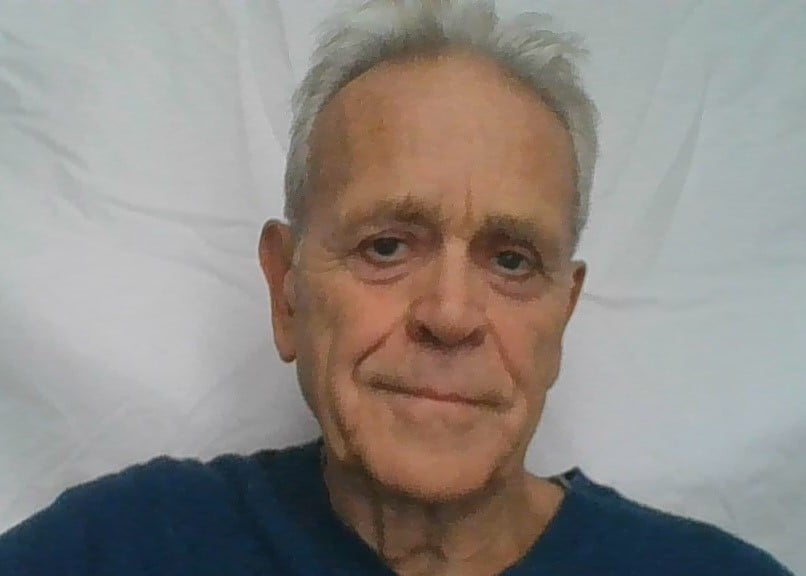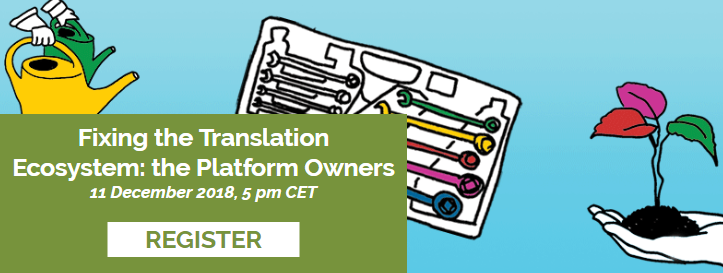-1.jpg)
TAUS has kicked off another series of interviews with the major players of the translation and localization industry. It became clear with the TAUS 2019 theme - Fixing the Translation Ecosystem - that there are several gaps to be filled in order to pave the way for the emergence of an industry unicorn by hitting the 1 billion dollar in revenues mark. To find out how captains of the industry will address these gaps in knowledge, operations, and data, we ask about their recipe for becoming the unicorn. First in line is Spence Green, CEO of Lilt.
Lilt, the San Francisco-based translation platform, recently received a major new round of funding from Sequoia. TAUS talked with Spence Green about the origins, mission and working model of this technology-centered company, and how this approach will enable Lilt to overcome what he identifies as the major challenge: industry fragmentation.
1. What led you to start Lilt in the first place?
Fifteen years ago I was working in the Middle East and noted that of all the books published in Arabic translation from English, the majority of the content was pulp fiction, but almost no works of biography or textbooks on a wider range of subjects. In other words, there was very little access to useful information from around the world.
Later in 2011, I met my co-founder when we were working on Arabic at Google Translate during the Arab Spring, and we were surprised to learn that much of the translation industry was not using machine translation technology, so we decided to work on a solution.
2. Why use a technology-driven solution for what has been a very human-centered service?
We see our mission as evangelizing “Information access.” We believe this is worth focusing on now that the next half a billion people will be coming online in the coming years. There are two key factors that condition this ambition – one is the state of the technology, which has now reached an inflection point in the case of machine translation and language processing and which people have been using to help translators since 2009. The other is the world has now figured out how to assemble large groups of people to deliver services of various kinds.
The larger question, of course, is why this technology solution has not really been used effectively until now. This is due to the fragmented state of the industry, and the difficulty of building a sustainable business.
The underlying cause of this fragmentation is that there are no inherent economies of scale in a labor-intensive business. So you need to use technology to produce the economies of scale that enable you to go further and differentiate. This means first solving the business problem of serving customers. We believe that technology is now poised in a way that helps us solve the next problem - delivering on this vision of information access.
So our business strategy is based on building a strong translator community around a technology core that is specifically tailored to localization and translation problems.
3. How do you operationalize this business model?
Our main task is to create a good work environment for our suppliers. After all, translators would go away and do something else if the work became mostly sweatshop labor. We are very concerned to build a community of people who are ready to embrace the technology and work enthusiastically to achieve their own ends.
This involves, for example, being outspoken about post-editing as a dumb practice. Ever since the 1950s when MT began, people have disliked post-editing, and in any case we think this approach of giving customers MT plus a price reduction is a flawed model. They might as well do it themselves. But training a large-scale MT system involves high-level training skills in data management. So that is our added value.
We also know that the fully-automated translation problem is a strong AI problem and is not going to be solved soon. So for business applications you need a human in the loop. But simply using an API doesn’t work well enough. You need to build systems to personalize translation to customer needs, yet which also respond to user practices.
Our system is unique because it learns all the time, so we don’t think in terms of “retraining” an engine. We have customers in production who have never retrained. Our baseline model is trained on general domain data that we collect, and domain-specific data is initialized off that. These processes are persistent and learn as they are used, which means that every time a segment is updated it goes into the system. Algorithms are not the differentiators - it’s the data.
4. What sort of team do you need to handle this agenda?
One analog for what we are is a company trying to build an electric vehicle. Just as a specific technology – the electric engine - stands at the heart of the EV, so we assume that MT is the always-on core technology at Lilt. This is very different from the sort of supplier that dips their toe into MT when they think they can use it successfully.
So we have a core team of 7 or 8 research scientists and NLP community people responsible for the data pipelines and domain adaptation. A small team like this can both focus on MT automation and make a contribution to society. Around that, we have senior engineers, customer and service people, marketing people, and so on. In all Lilt has a staff of 25 today, and we are hiring experienced people who care about the overriding translation problem of information access and have the requisite domain knowledge.
5. What do you make of the ‘human parity’ argument in advancing translation automation?
I disagree with this concept. Primarily because the quality-testing regime that has been used ever since the first Georgetown experiments in the 1950s evaluates sentences in isolation, and this is still used today. The fact is that we are so far able to build machines that can translate random sentences, but we haven’t yet successfully translate complete documents. So we need a better evaluation scheme to identify when MT is suitable for specific cases.
We believe that it is thoughtless to apply a given technology to a whole profession without any differentiation. The fact is that translators are writers at heart. And at Lilt, we build bilingual augmented writing tools (i.e. predicting the next words) for them, with a more attractive interface. This dates back to an idea from Martin Kay in the 1980s. We also think that translators want to be paid by the hour rather than by their output, rather as coders are.
6. What sort of growth do you anticipate for Lilt’s language mix?
To ensure a sustainable business, most translation suppliers aspire to a ceiling of 30 to 40 languages. But our mission should be to make it easier to translate into all languages. There are two problems here - data availability for low-resource languages for MT engines, and the fact that translators can be hard to find. For example, we have one customer who needs translation into Pashto and Igbo, so we are looking for data on these.
We currently handle 29 language pairs into and out of English and support translation between all 29 languages. Our ambition is to cover any language that a business would need.
7. How do you continue to inspire your translator community while prioritizing your customers?
Our people take pride in their work, so instead of anonymizing our translators, we give them direct access to the customers for whom they work. Our mission is to build a tech company, so we want to build the tools and tech to make workflows more efficient. This means that it is less important for us to know where the human comes from. Breaking down the wall between customer and worker adds value to our business service. At the same time, it is very important to talk to our translators and build a community, as most of them work alone yet want to share our burden. So we need to invest in both sides of this equation – customers and community.
8. Who is your main competitor?
I tell the team: our competitor is the fragmentation of the market today! Marc Andreessen says that bad markets always need great teams. We see the dynamics of our fragmented market as challenging, so we need to focus more on the underlying causes of these market challenges and less on our business competitors.
9. Finally, Lilt’s key goal?
We certainly say yes to the idea of becoming a unicorn! We naturally want to be a big sustainable customer-focused business that makes translation more affordable. But the real challenge is to be sustainable. So our recent fund-raising effort validates the progress we have made. But it does not prove yet that we are a successful company!
To hear Spence Green speak live and ask your questions, save your seat at the upcoming TAUS Webinar by clicking below!
8 minute read

